Click on images to enlarge
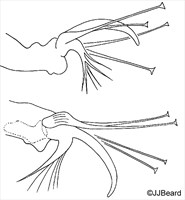
Fig. 1. Oligonychus zanclopes adult female - detail of empodium I (top) & IV.

Fig. 2. Oligonychus zanclopes adult female paratypes - detail of empodium I.
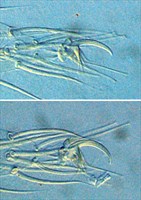
Fig. 3. Oligonychus zanclopes adult female paratypes - detail of empodium II.

Fig. 4. Oligonychus zanclopes adult female paratypes - detail of empodium III.

Fig. 5. Oligonychus zanclopes adult female paratypes - detail of empodium IV.
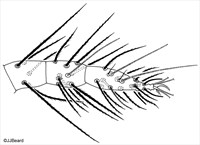
Fig. 6. Oligonychus zanclopes adult female paratype - detail of tarsus I (with genu and tibia).
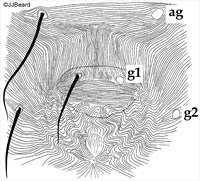
Fig. 7. Oligonychus zanclopes adult female paratypes - detail of pregenital striae.
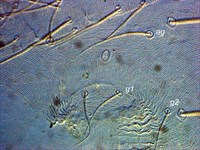
Fig. 8. Oligonychus zanclopes adult female paratypes - detail of pregenital striae.
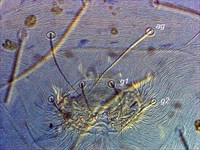
Fig. 9. Oligonychus zanclopes adult female paratype - detail of pregenital striae.
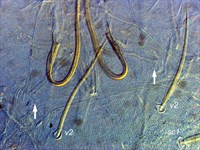
Fig. 10. Oligonychus zanclopes adult female paratype - detail of the tip of the peritreme (indicated by arrows).
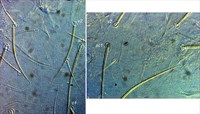
Fig. 11. Oligonychus zanclopes adult female paratypes - detail of pattern of striae on prodorsum.
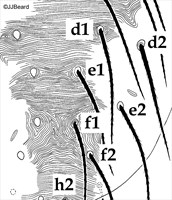
Fig. 12. Oligonychus zanclopes adult female paratypes - detail of pattern of dorsal striae between setae e1, f1 and f2.
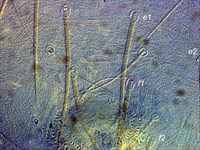
Fig. 13. Oligonychus zanclopes adult female paratype - detail of the pattern of dorsal striae between setae e1, f1 and f2 (with oblique striae between f1-f2).
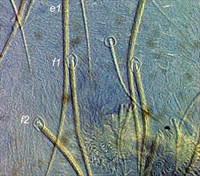
Fig. 14. Oligonychus zanclopes adult female paratype - detail of the pattern of dorsal striae between setae f1 and f2 (with irregular transverse and oblique striae).
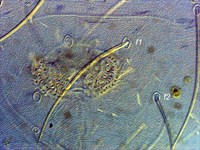
Fig. 15. Oligonychus zanclopes adult female paratype - detail of the pattern of dorsal striae between setae f1 and f2 (with longitudinal striae).
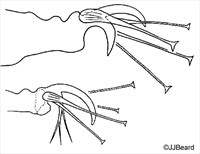
Fig. 16. Oligonychus zanclopes adult male holotype - detail of empodia I (top) & IV.

Fig. 17. Oligonychus zanclopes adult male paratypes - detail of empodium I.

Fig. 18. Oligonychus zanclopes adult male paratypes - detail of empodia II and III.
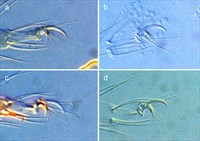
Fig. 19. Oligonychus zanclopes adult male types - detail of empodium IV: a. holotype; b.-d. paratypes.
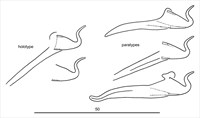
Fig. 20. Oligonychus zanclopes adult male holotype and paratype - detail of aedeagus (at different focal points).
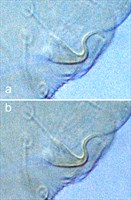
Fig. 21. Oligonychus zanclopes adult male - detail of aedeagus: a. holotype; b. paratype.
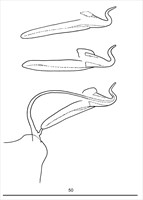
Fig. 22. Oligonychus zanclopes adult males (non-type) - detail of aedeagus.
Material examined
types; non-types
Taxonomy
Subfamily Tetranychinae
Tribe Tetranychini
Common Name
none
Distribution
*Australia: south eastern Queensland
Taxonomy Changes
None
Diagnosis
Female
- empodia I-IV = long slender curved claw, as long as or longer than proximoventral hairs (Figs 1-5)
- tarsus I with the sockets of four tactile setae proximal and one solenidion adjacent to the socket of the proximal duplex seta (Fig. 6)
- pregenital striae entirely longitudinal (Figs 7-9)
- peritreme ending in short hook, like golf club (Fig. 10)
- prodorsum with longitudinal striae, weakly forming a U-shape posteriorly (Fig. 11)
- most dorsal striae transverse, except irregular longitudinal and oblique between setae f1-f1 and f1-f2 (Figs 12-15)
- lobes on ventral striae rounded, widely spaced (see Fig. 8)
- chaetotaxy for legs I-IV:
- femora 10, 6, 4, 4
- genua 5, 5, 4, 4
- tibiae 10(1+0), 7, 6, 7
- pale green with yellow tinge, white legs often with green tinge, dark green to black food spots on either side of body
Male
- empodium I = bifid claw, dorsal and ventral claws equal in length and thickness (Figs 16, 17)
- empodia II-IV with slender dorsal claw as long as proximoventral hairs (Figs 18, 19)
- tarsus I with the sockets of four tactile and two solenidia proximal to the socket of the proximal duplex seta
- peritreme like female ending in short hook, like golf club, with tip slightly expanded (Fig. 10)
- chaetotaxy for legs I-IV:
- femora 10, 6, 4, 4
- genua 5, 5, 4, 4
- tibiae 13(3+0), 7, 6, 7
- aedeagus dorsally directed, sinuous with two major curves; dorsal margin at approx. 40° angle to ventral margin, abruptly bending dorsally at acute angle, to form finger-like dorsal projection; dorsal projection strongly curving posteriorly, and slightly tapering to end in blunt tip (Figs 20-22)
- yellowy green, with dark green to black food spots dorsally, legs yellow, eyes red
Hosts
*Oryza sativa, *Saccharum officinarum (Poaceae)
Similar Taxa
Oligonychus grypus Baker & Pritchard 1960
A similar species was found in 2001 causing similar damage to sugarcane in USA (pers com. P. Allsopp), but there is no material of this species for examination in Australia.
Biology
This species lives on the underside of the leaf blade, where it produces extensive webbing, and its feeding causes white blotches which become brown.
References
*Beard, J.J., Walter, D.E. and Allsopp, P.G. (2003) Spider mites of sugarcane in Australia: a review of grass-feeding Oligonychus Berlese (Acari: Prostigmata: Tetranychidae). Australian Journal of Entomology 42: 71-78
Copyright © 2018. All rights reserved.